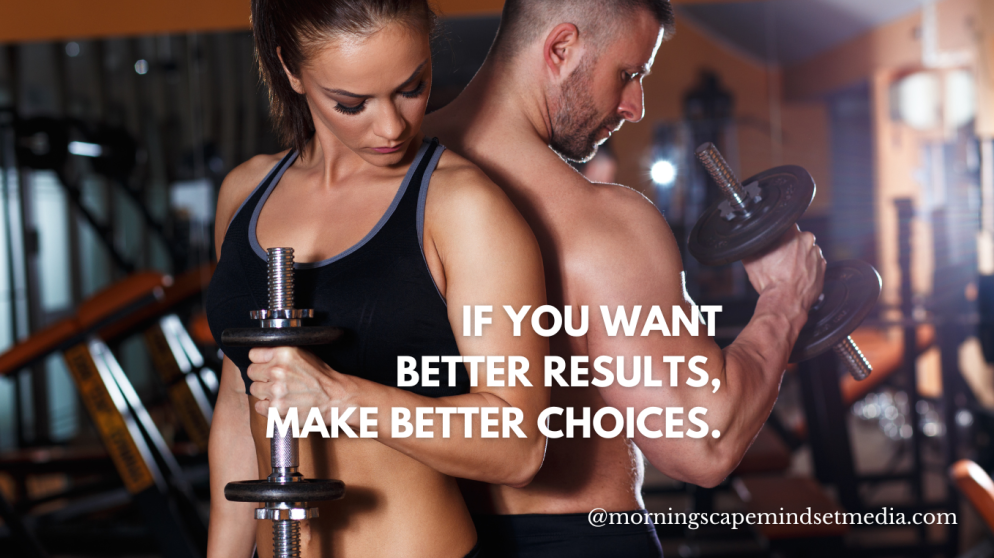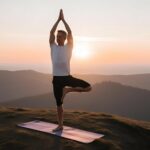Disclosure:
Thank you for reading this post, don't forget to subscribe!
Some of the links on this website are affiliate links. This means that if you click on the link and make a purchase, we may receive a small commission at no extra cost to you. Your support helps us keep the site running.Learn more on my Privacy Policy and Affiliate Disclosure page. Thank you for your support!
A strong core is not just about scoring those washboard abs—it’s about building a stable foundation for everything you do. Imagine being able to move better, feel stronger, and prevent injuries all with a few simple tweaks to your workout routine. Building core strength offers these benefits and more.

Core strength is more than just having six-pack abs. A strong core serves as the foundation for your entire body, helping improve posture, reduce the risk of injury, and enhance physical performance. Whether you’re an athlete or simply looking to improve your overall health, developing core strength should be a key part of your fitness routine. This comprehensive guide will walk you through the importance of core strength, how to target your core muscles effectively, and provide exercises to get you started on your journey to a stronger, healthier you.
What is Core Strength?
The core consists of more than just your abdominal muscles. It includes several muscle groups that wrap around your midsection, from your front abdominals to your obliques, and even your back muscles. Core muscles stabilize your body, support your spine, and help you move efficiently. In addition to helping you perform physical activities like lifting and running, a strong core also prevents back pain, enhances balance, and improves overall stability.
Your core muscles include:
- Rectus Abdominis (the “six-pack” muscles)
- Obliques (muscles on the sides of your torso)
- Transverse Abdominis (deep core muscles wrapping around the spine)
- Erector Spinae (lower back muscles)
- Pelvic Floor Muscles (muscles supporting your organs and stabilizing the spine)
check out the 10 Best Exercises for Tightening Your Core: Abs and Obliques Workout – Complement your core workout routine with more effective exercises.
Why Core Strength is Essential for Health and Performance
1. Enhances Posture and Stability
Core strength is crucial for maintaining good posture. A strong core supports your spine, allowing you to stand, sit, and move with better alignment. Poor posture, often caused by a weak core, can lead to back pain and fatigue.
2. Prevents Injury
A strong core reduces your risk of injury during physical activities, particularly those involving twisting or lifting. By stabilizing your spine and pelvis, your core helps your body absorb shocks and prevent overuse injuries.
3. Improves Balance and Coordination
Whether you’re walking, running, or lifting, your core helps you maintain balance and control your movements. Strengthening your core muscles will improve your overall coordination, making everyday activities easier and safer.
4. Supports Athletic Performance
From running and swimming to weightlifting and sports like tennis or golf, all physical activities require a stable core. Athletes with strong cores have better endurance, agility, and power, allowing them to perform at higher levels.
learn more about Core Objectives: Making a Case for Progressive Core-guide on core stability exercises to dive deeper into core training techniques.
read next:
How to Build Core Strength Effectively
1. Focus on Compound Movements
Rather than isolating your abs with crunches or sit-ups, incorporate compound exercises that engage multiple muscle groups. Exercises like squats, deadlifts, and push-ups challenge your core to stabilize your body, making them excellent choices for building functional strength.
2. Train with Progressive Overload
Like any other muscle group, your core muscles need progressive overload to grow stronger. Gradually increase the difficulty of your core exercises by adding weights, increasing resistance, or extending the duration of each set.
3. Prioritize Form and Technique
Core exercises require precision. Focus on maintaining proper form to ensure you’re effectively engaging the right muscles. Poor form can result in injury or inefficient workouts. Keep your spine neutral and avoid rounding your back during exercises.
4. Balance Flexibility with Strength
Core strength isn’t just about building muscle; it’s also about flexibility. Incorporating stretches into your routine will prevent muscle tightness and improve mobility, allowing for a greater range of motion during workouts.
find out more about How to Create a Customized Workout Plan – Learn how to tailor your workout plan to include core exercises and meet your fitness goals.
Top Core Strength Exercises to Add to Your Routine

Here are some of the most effective core exercises you can include in your fitness routine:
1. Plank
- How to Perform: Start in a push-up position, with your elbows bent at 90 degrees and your forearms on the floor. Keep your body straight from head to toe and engage your core. Hold this position for 30–60 seconds.
- Muscles Targeted: Entire core, shoulders, and back.
2. Russian Twists
- How to Perform: Sit on the floor with your knees bent and feet off the ground. Hold a weight or a medicine ball and twist your torso to the left and right, keeping your core engaged.
- Muscles Targeted: Obliques, transverse abdominis, and rectus abdominis.
3. Bicycle Crunches
- How to Perform: Lie on your back with your hands behind your head and your legs lifted off the ground. Bring one knee toward your chest while rotating your opposite elbow to meet it, then switch sides.
- Muscles Targeted: Rectus abdominis, obliques, and hip flexors.
4. Dead Bug
- How to Perform: Lie on your back with your arms straight up and your legs in tabletop position. Lower your right arm and left leg simultaneously, then return to the starting position and repeat on the other side.
- Muscles Targeted: Transverse abdominis, rectus abdominis, and hip flexors.
5. Mountain Climbers
- How to Perform: Start in a high plank position. Bring one knee toward your chest, then quickly switch legs, mimicking a running motion while keeping your core tight.
- Muscles Targeted: Entire core, shoulders, and legs.
How Often Should You Train Your Core?
For optimal results, aim to incorporate core exercises into your fitness routine 2–3 times a week. It’s important to allow time for recovery, as overtraining your core can lead to muscle fatigue or injury. Depending on your fitness level, you can start with shorter sessions (10–15 minutes) and gradually increase the intensity and duration.
Common Mistakes to Avoid in Core Training
1. Overtraining Your Abs
While it’s important to work your core, you don’t need to train it every day. Your core muscles need time to recover and rebuild, just like any other muscle group.
2. Neglecting the Lower Back
Many people focus solely on their front abs and ignore their lower back muscles. Strengthening the lower back is essential for a balanced core, so be sure to incorporate exercises like back extensions or superman holds.
3. Relying Too Much on Isolation Exercises
Crunches and sit-ups aren’t the only way to train your core. Relying too much on these isolation exercises can lead to muscle imbalances. Incorporate compound movements and functional exercises to engage your entire core.
Nutrition’s Role in Core Strength
Building a strong core isn’t just about exercise—your diet plays a crucial role as well. To fuel your workouts and support muscle growth, ensure you’re eating a balanced diet rich in lean proteins, healthy fats, and complex carbohydrates. Hydration is also essential, as it helps maintain muscle function and prevents cramps.
explore more:
Conclusion: Transform Your Fitness with Core Strength
Building core strength is essential for achieving a healthy, balanced, and powerful body. Whether you’re a beginner or an experienced athlete, incorporating core exercises into your routine will enhance your overall fitness, prevent injuries, and improve daily movements. Remember to focus on compound exercises, train with proper form, and maintain a balanced diet to see the best results.
Start today by integrating some of the core exercises we’ve outlined into your workout routine. Your body will thank you, and you’ll feel stronger from the inside out. What are your favorite core exercises? Share them in the comments below!
more about:
HEALTH / WELLNESS / FITNESS / NUTRITION
share the article













